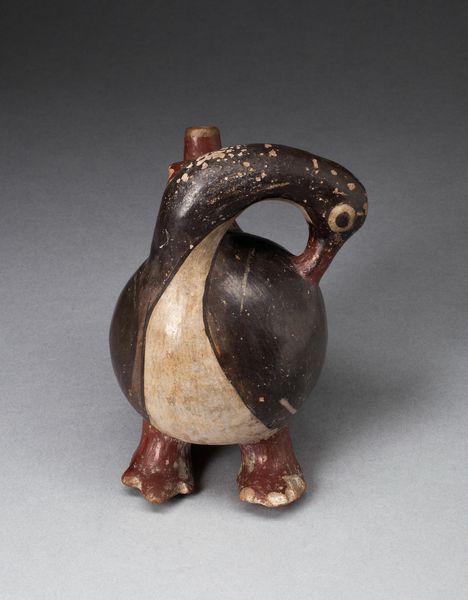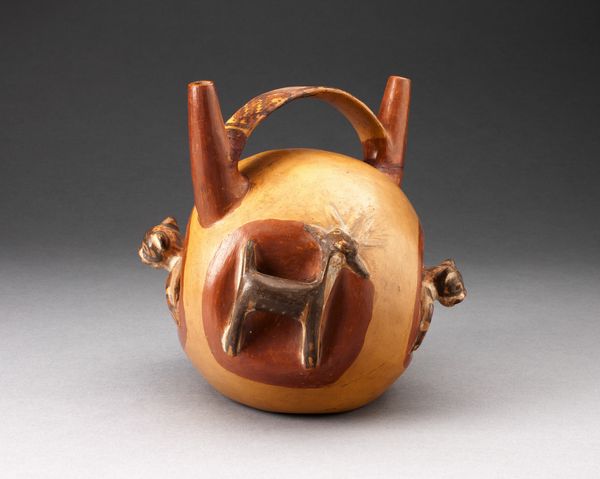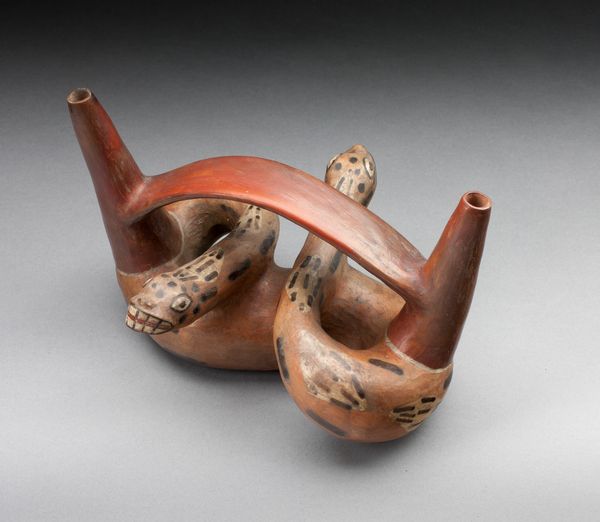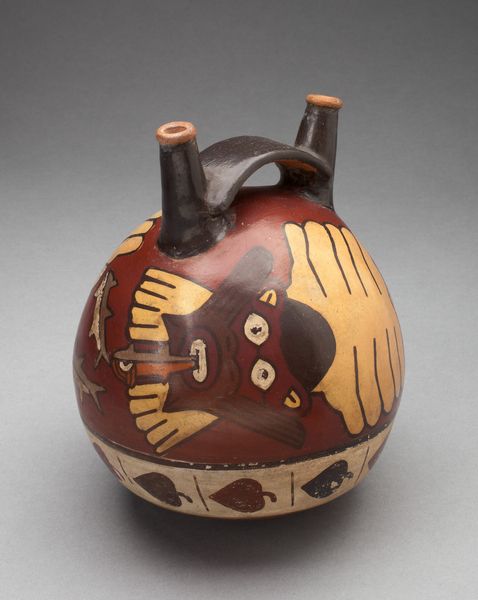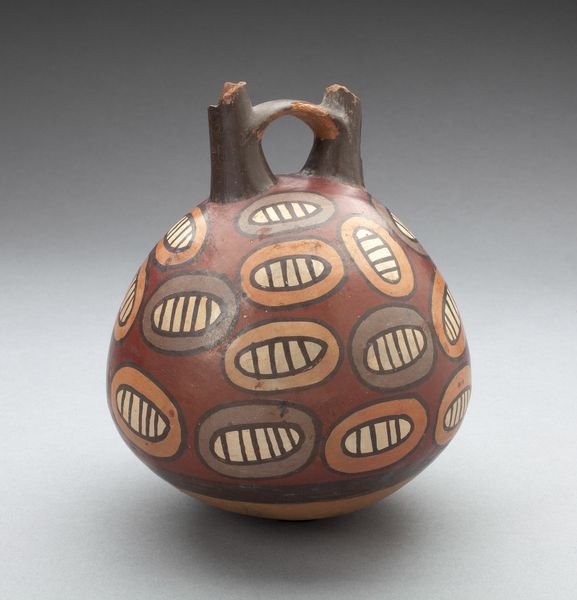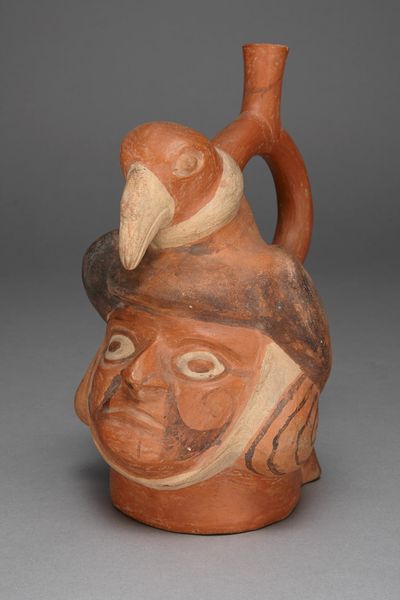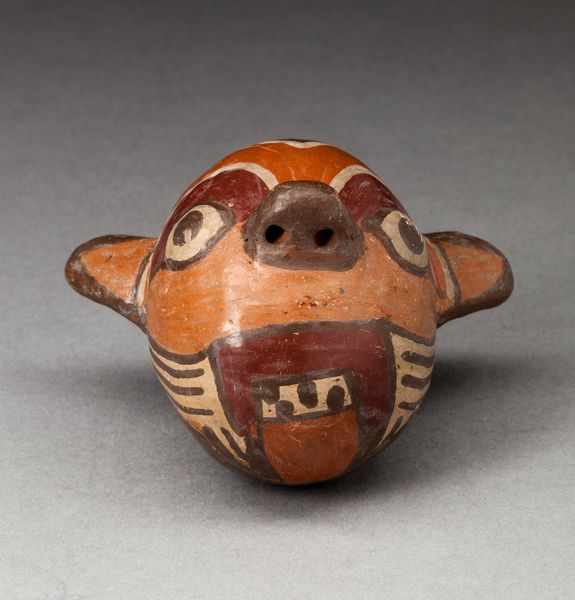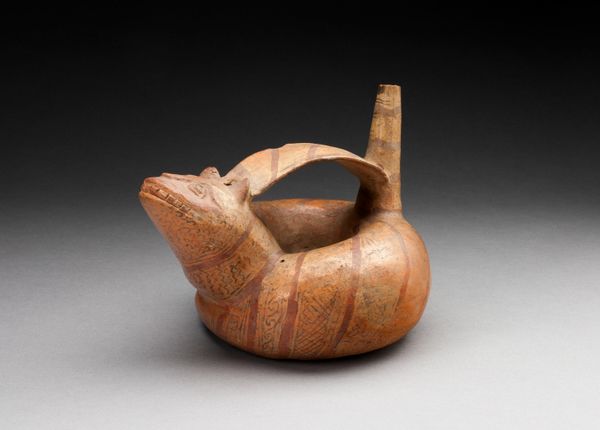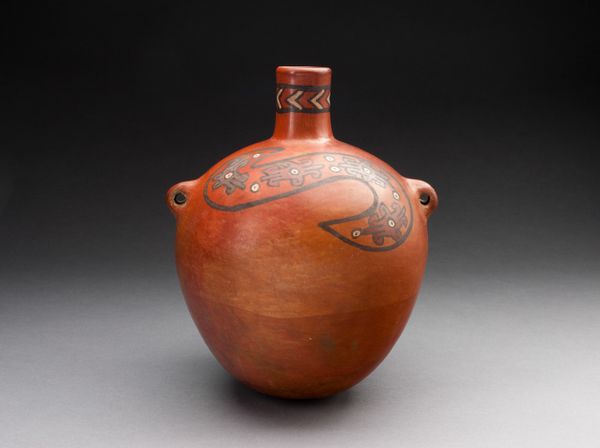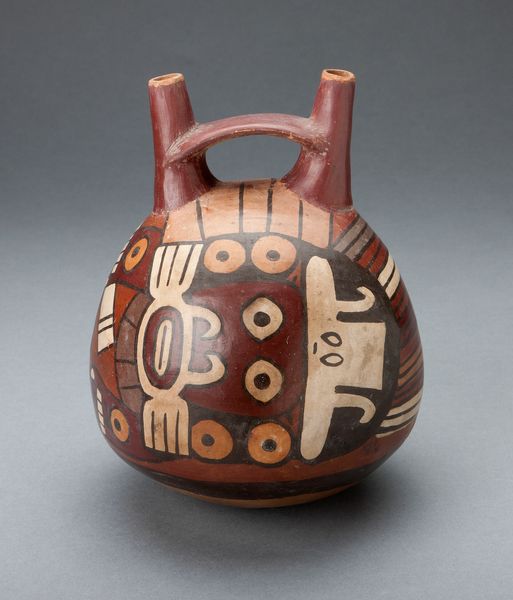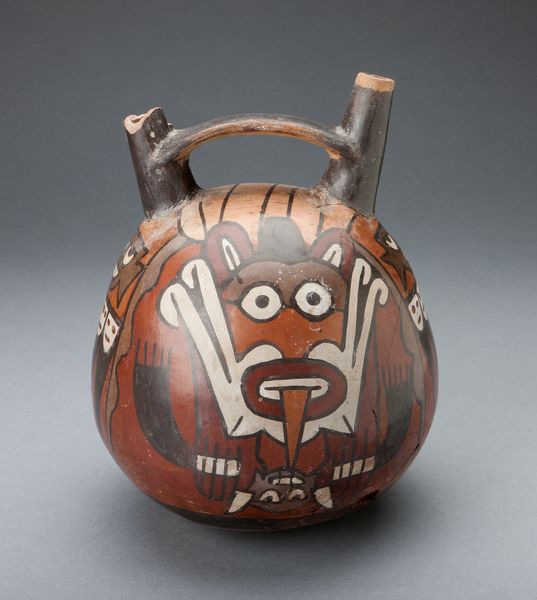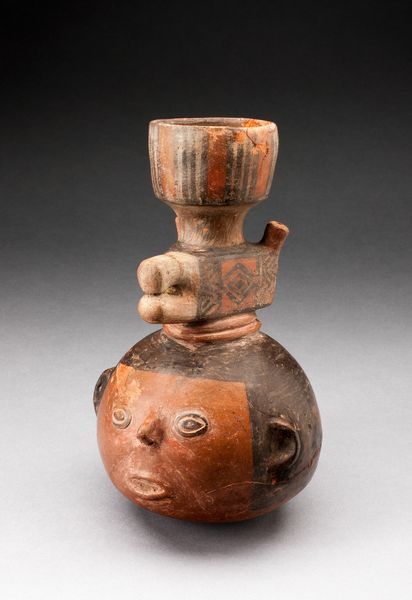
Single Spout Vessel in the Form of a Long-Beaked Bird with Turned Head c. 180 - 500
0:00
0:00
ceramic
#
ceramic
#
figuration
#
form
#
indigenous-americas
Dimensions: 16.5 × 14 cm (6 1/2 × 5 1/2 in.)
Copyright: Public Domain
Curator: Take a moment to look at this striking ceramic piece. It's titled "Single Spout Vessel in the Form of a Long-Beaked Bird with Turned Head," crafted by the Nazca people sometime between 180 and 500 AD. Editor: Immediately, what strikes me is this odd serenity. It’s got a playful quality with its bird form, but also a profound sense of stillness, of watching. The way that elongated beak curves back to meet the vessel is visually captivating. Curator: The Nazca were masters of form, weren’t they? This vessel embodies that skill beautifully. Notice the way the artist integrates functionality with figuration. It’s not just a pot shaped like a bird; it's an exploration of what a bird can be, expressed in clay. The vessel uses slips to add pigment and geometric abstraction that feels incredibly modern. Editor: Absolutely. That elongated beak isn’t merely decorative; it’s functional, acting as a spout. For me, the imagery of the bird itself carries significant weight. Birds in many cultures, including those of ancient South America, are seen as messengers, mediators between the earthly and spiritual realms. Does this bird form suggest a ritualistic purpose for the vessel, a means of communicating with the divine, perhaps? Curator: It's highly probable. Nazca pottery was often used in ritual contexts. The turned head, as well, is interesting. What does it signify, that backward glance? Is it looking back at tradition, or perhaps guarding the vessel’s contents? Editor: It gives it a wonderful feeling of self-awareness. Like it is privy to some hidden knowledge that only the turned head can perceive, and it will never be imparted. That eye, with its concentric circles, emphasizes a watchfulness over something precious. And from the side, this head almost makes it feel like a decoy in a way, as though its contents might remain secret to outsiders or to people not willing to seek them out. Curator: It’s truly remarkable how much they packed into one object. We see this combination of form, utility, symbolism, and spirit, encapsulated in earth and fire. So simple and yet infinitely complex, right? Editor: Absolutely. This piece really underscores the enduring power of ancient art, to keep asking questions about culture, imagination, purpose. It is a vessel containing so much more than mere liquid, isn't it?
Comments
No comments
Be the first to comment and join the conversation on the ultimate creative platform.
